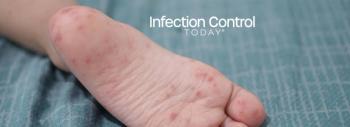
Unhealthy Patterns of Innate Oral Bacteria May Cause Bad Breath
It might not just be poor oral hygiene causing that bad breath say researchers from Japan; unhealthy patterns of bacterial populations inherent to the mouth may also contribute to oral malodor. They report their findings in the May 2010 issue of the journal Applied and Environmental Microbiology.
Second only to cavities and gum disease, bad breath is a major complaint made by patients visiting the dentist. Poor oral hygiene resulting in bacterial overgrowth is a known cause of bad breath and while treatment with antibacterials generally provides short-term relief, the malodor-causing bacteria quickly return. Bacteria attributed to bad breath are considered members, not imposters, of the oral microbial ecosystem suggesting that an overall shift in the structure of bacterial populations may be necessary to completely cure bad breath.
"Adjusting the global composition of indigenous bacterial populations toward a 'healthy' pattern may be an alternative approach to effectively prevent oral malodor," say the researchers.
Bacterial populations in saliva samples collected from 240 patients complaining of bad breath were analyzed and divided into groups based on similar patterns. These patterns were then further explored in those exhibiting varying intensity levels of bad breath. One group displayed noticeably lower levels of volatile sulfur compounds (a major contributor to bad breath), while also showing higher proportions of bacterial populations indicating a possible correlation between the structure of innate bacterial populations and bad breath.
"The results of this investigation clearly demonstrate that oral malodor is a symptom based on the characteristic occupation of indigenous oral bacterial populations, rather than solely on bacterial overgrowth due to poor oral hygiene," say the researchers. "The observation of oral bacterial populations from a broad ecological view may provide novel insights into human health and other disorders within the oral cavity."
Reference: T. Takeshita, N. Suzuki, Y. Shimazaki, M. Yoneda, T. Hirofuji, Y. Yamashita. 2010. Relationship between oral malodor and the global composition of indigenous bacterial populations in saliva. Applied and Environmental Microbiology, 76. 9: 2806-2814.
Newsletter
Stay prepared and protected with Infection Control Today's newsletter, delivering essential updates, best practices, and expert insights for infection preventionists.






